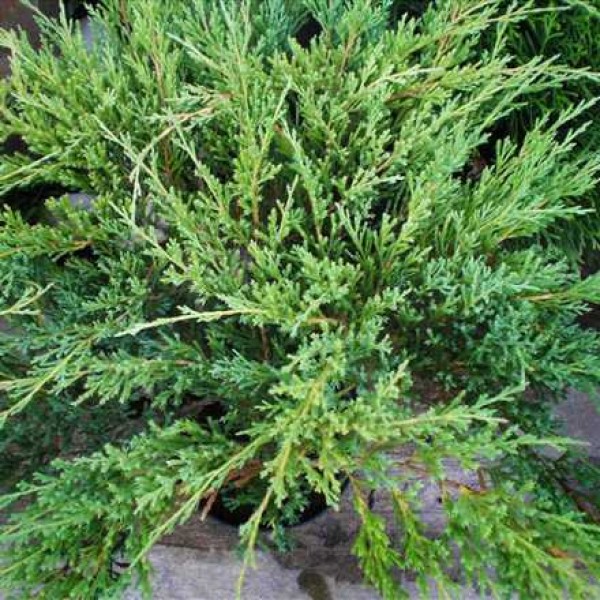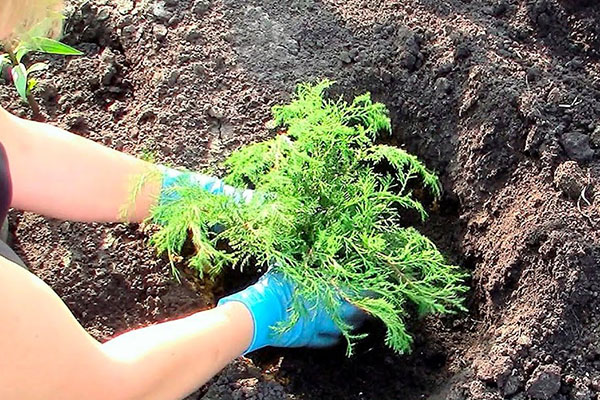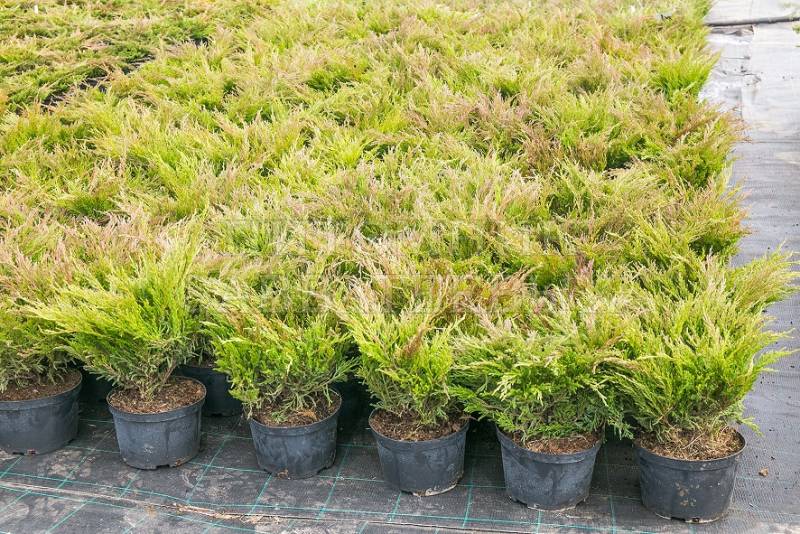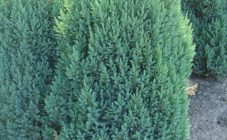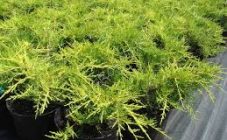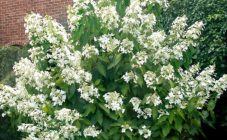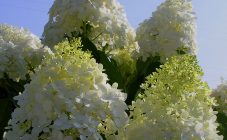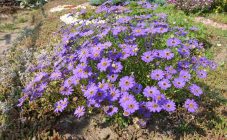Content:
Every year, utilitarian plants are losing their popularity among flower growers who have at their disposal wonderful household plots. Many have an irresistible desire to beautifully arrange their possessions and master landscape art at the same time. For these purposes, people prefer evergreens, which do not lose their decorative properties even with the onset of cold weather.
In a huge variety of such evergreens, the Andorra compact juniper, which has a horizontal structure, stands out. It is worth paying attention to this ephedra, which can be used to decorate and decorate the yard in an original way.
Characteristics and description of the variety
Juniper horizontal Andorra compact is a shrub creeping on the top layer of the soil. With the help of its needles, it is able to form a crown-pillow, which will rise above the ground at a distance of 40 cm. This type of juniper differs from its "congeners" by the following features:
- the diameter of the crown is on average 1.5-2 m;
- the needles of the bush have a green tint, and small white spots create the illusion of a bluish tide;
- inedible juniper berries are distinguished by the shape of a ball, as well as fleshy flesh inside;
- Andorra's growth is very slow - the annual growth rate is no more than 10 cm.
The special decorativeness of this coniferous plant lies in the fact that with the onset of cold weather, the needles are able to change their color to purple and light purple. Juniper is distinguished by its phytoncide, as evidenced by its ability to destroy a third of the bacteria on its own, in connection with this fact the culture has immunity to various diseases. Only a few types of pests can harm a plant, namely:
- shield;
- coniferous aphids;
- scale insect;
- juniper sawer.
Landing features
Planting Andorra compact juniper must be carried out as carefully as possible. This is possible only on condition of prior familiarization with the rules of agricultural technology. So, the agricultural technology of Andorra compact juniper consists of two main steps:
- Choosing the optimal time for planting seedlings. The best option is April or the second half of May.
- Choosing a suitable garden bed on the land.
To provoke the active growth of juniper, the soil before planting seedlings must be cleaned of weeds, primarily from perennials. It is not at all necessary to use expensive fertilizers, since you can use ordinary chernozem, any garden or meadow soil.
The key point when planting Andorra compact juniper is the stage of careful preparation of the earthen mixture. The main component for the preparation of the substrate is sour high-moor peat, its acid-base balance (pH) should not exceed 4.5. If the soil has a higher level of acid-base balance, then you can acidify it a little.
Experts recommend mulching the trunk circle using chopped pine bark and spruce branches for this, and some advise using garden gray acid or electrolyte.
In the process of preparing the planting pit for the Andorra compact juniper, it is worth considering that its depth should be several times greater than the length that the plant roots have, taking into account the clod of earth. After the juniper has been planted, it should be watered with sufficient water. Mulch the trunk circle immediately, using mown grass, peat, bark or humus for this. The width of the mulch layer should be at least 10 cm, as this will serve as protection against cold and summer heat, and also prevent excessive accumulation of moisture.
It is worth noting that it is strictly forbidden to tamp the soil in the area where the juniper was planted. Gradually, the earth will settle on its own and arrange the seedlings at the level that is needed.
Recommendations for proper care
All plant species need proper care after planting, and Andorra compact juniper is no exception. If you follow the basic rules of care, then the rich and bright color of the shrub will be provided throughout the year.
In the first months after the juniper has been planted in open ground, it must be watered regularly. The number of approaches should be 2 times every 7 days, which will allow the plant to fully root in the ground.
As for feeding, the first time the Andorra juniper needs to be fed even before planting it in the ground. Any complex of mineral components intended for conifers must be mixed with the soil from the hole. This procedure will provoke active growth of the juniper seedling, as well as the development of plant roots. For spring feeding, which should be carried out in early May-late April, use 20 g of nitroammofoska per 1 sq. m.
Gardeners recommend autumn feeding at the end of September or in October, with the use of potassium-phosphorus fertilizers. In order to fertilize still immature juniper seedlings, you can use potash, mineral and organic fertilizers, as well as a number of the following components:
- urea;
- wood ash;
- potassium sulfate;
- biohumus.
You need to prune the juniper with the onset of spring. Using pruning shears, it is necessary to remove branches that have aged, withered or damaged. Frozen shoots also need to be pruned a little. After the pruning procedure has been performed, the ephedra must be treated with a fungicide and fed.
Disease and pest control
On rare occasions, Andorra compact juniper can infect a pest or disease. But, despite the strong immunity of the plant, the following diseases are dangerous for it:
- Alternaria, due to which the needles darken, and the shoots are covered with a velvety bloom.
- The main symptom of biotorella cancer is the fact that the bark of the bush dries up and darkens, and the dead wood gradually disappears.
- Rust in the form of growths of an orange hue, which after rain take the form of fleshy formations.
As for pests, the most dangerous of them are represented by spruce spider mites, aphids, caterpillars, scale insects and juniper sawflies. All these parasites, for the most part, feed on the sap of the plant, which entails a delay in development, as well as the fact that the damaged shoots are curled.
In order to prevent the detrimental effect of fungal infections and parasites on juniper, you will need the correct selection of the drug intended for spraying the culture. In spring and summer, gardeners recommend using products such as Aktara, Angio and Actellik. If unpleasant symptoms are eliminated in a timely manner, this will lead to the fact that the juniper will grow well and please the eye with its needles.
Application in landscape
Juniper Andorra is often used to knock out tall shrubs, which have a bare, low root zone. This plant will catch the eye, both in a group and in a single planting, it can be used to decorate retaining walls, slides and slopes.
A juniper is a wonderful enclosure and design for an alpine slide or tall flower bed. They can be very original and interesting to decorate a garden fountain or an artificial reservoir, an arbor or a gazebo, which is located on a dais.
